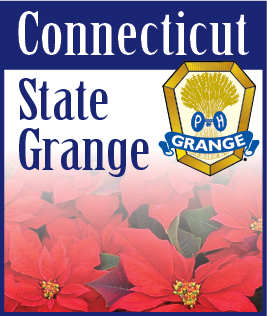| DECEMBER 21, 2019 -- When a young Martin Luther King Jr. came north to spend a summer working in tobacco fields,he found a whole new world in 1940s Simsbury. It was, according to a number of accounts, a pivotal moment.
After being in Connecticut, King “felt an inescapable urge to serve society,” according to a Courant article. King wrote that it was difficult to return from the more integrated North to the Jim Crow-era South, according to a 2011 documentary produced by Simsbury High School students. “After that summer in Connecticut, it was a bitter feeling going back to segregation,” King wrote.
But while King’s Connecticut summers are recorded in documents and referenced in at least one of his speeches, the history has been archived sporadically and inconsistently. The State Historic Preservation Office is hoping to change that, using $30,000 from the National Park Service’s African American Civil Rights Grant and an additional $20,000 in matching funds.
Disjointed documentation
In 1944, as a 15-year-old incoming freshman at Atlanta’s Morehouse College, King and a group of other students came to the Farmington Valley to work in the tobacco fields for a summer. King returned for an additional summer three years later.
In letters home, King talked about working hard on the Cullman Brothers farm — but he also talked about eating at nice restaurants and going to church with white people. Morehouse students attended integrated dances at the Simsbury Grange.
Catherine Labadia, a staff archaeologist and the deputy state historic preservation officer, said her office will use the funds to delve into archival materials about those Morehouse students’ summers.
Much of the information is floating around in various collections, Labadia said, and there were flurries of research in the late 1990s and early 2000s. Using the grant, the preservation office will hire a cultural resource management firm to collect and organize that information. “I felt guilty that I had to rediscover this information,” Labadia said. “I don’t want that to happen again.”
The Morehouse students worked mostly at three locations: two in Simsbury and one field that crosses the Simsbury-East Granby town line, Labadia said.
After establishing exact locations of significance to King and other students, Labadia said, the office will nominate those places to the National Register of Historic Places.
“There’s a lot of stuff to go through that just hasn’t been pulled together in the way that our office would like to see it, which is looking for those places,” Labadia said.
A register listing is not only a recognition of historical significance — it also gives places and buildings extra protections and prevents them from being “unreasonably destroyed,” Labadia said. Even within the context of the tobacco field research, Labadia has seen why historic places need protection.
The Simsbury dormitory where King most likely spent his summers — a place of great historical significance — used to sit on Firetown Road, according to research from the preservation office. But in 1984, the Simsbury Volunteer Fire Company burned down the building for a training exercise.
Historic land, modern uses
An additional set of significant buildings, the tobacco barns where the Morehouse students worked, were at risk more recently. Just like the dormitory, the barns weren’t listed on them at risk when a developer took control of the Simsbury tobacco fields. The state’s largest solar project has carpeted the fields with solar panels. The project’s name — the Tobacco Valley Solar Project — is a nod to the land’s history.
But the project was controversial, in part because of those historic but unprotected barns. The town of Simsbury fought against the project’s impact on the town and the land.
The town’s fight eventually led to an agreement that the developer would preserve four of the site’s five historic tobacco barns. The agreed-upon Barn Management Plan also requires the buildings to be “mothballed” for further preservation.
However, that’s no guarantee of their safety once the developer’s lease on the land expires. Labadia said the preservation office’s research will include those tobacco barns, for eventual register nomination. Labadia said the office also plans to nominate the Simsbury Grange, which held integrated events such as dances that the Morehouse students attended during the summer.
“The story is so overwhelming in some ways that it’s easy to get sucked into that," Labadia said. “But for us, it always come back to place ... that tangible part of history that we can still go see and touch.”
NOTE: Original article published in the Hartford Courant on November 13, 2019. |
